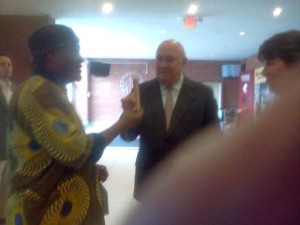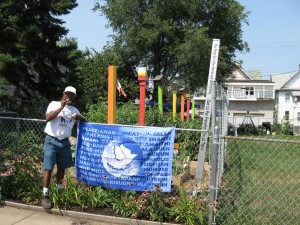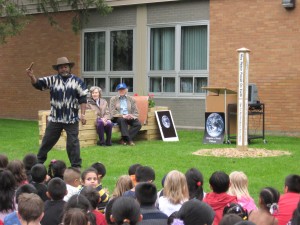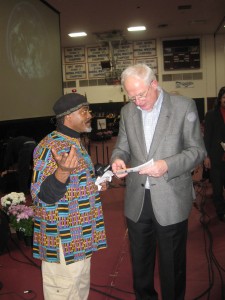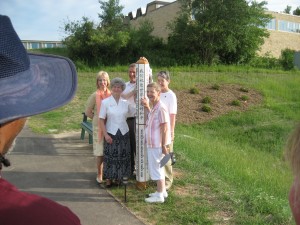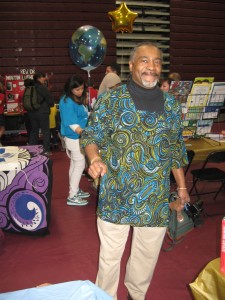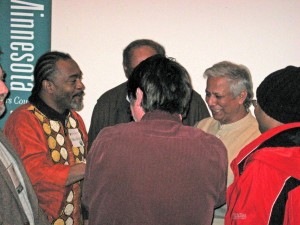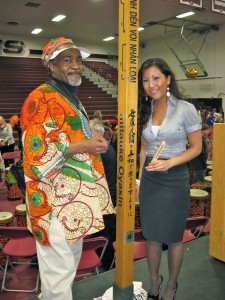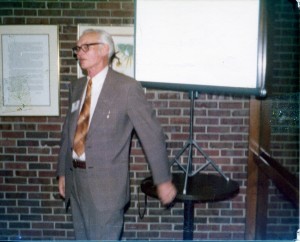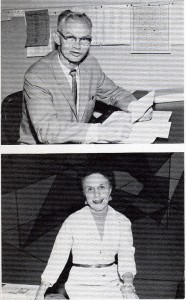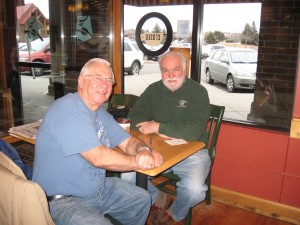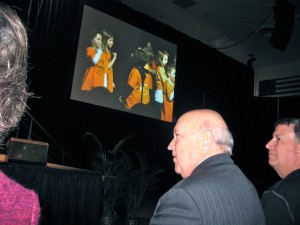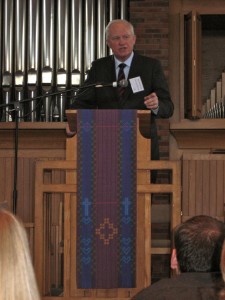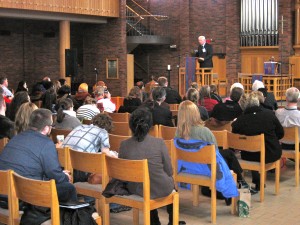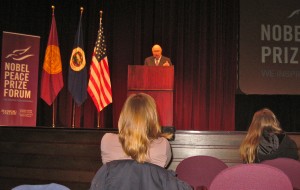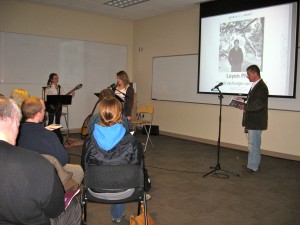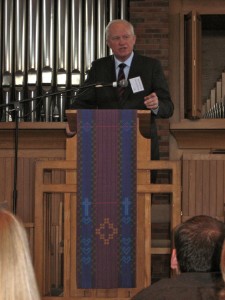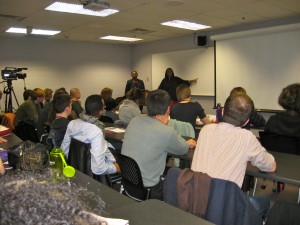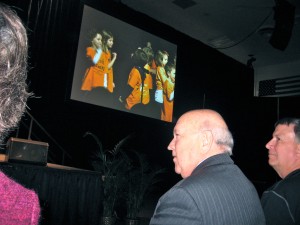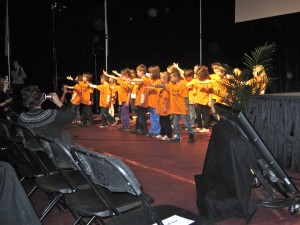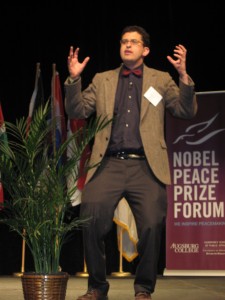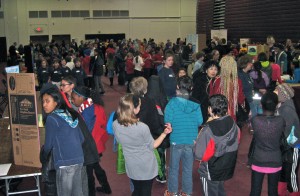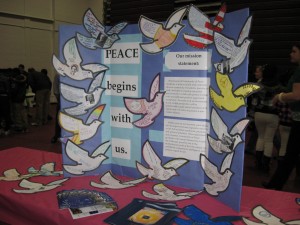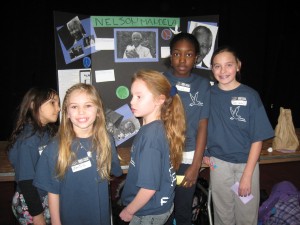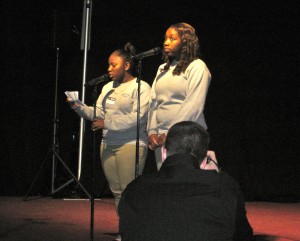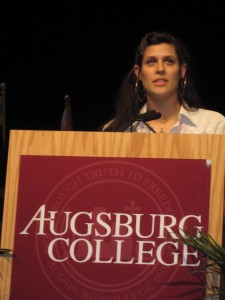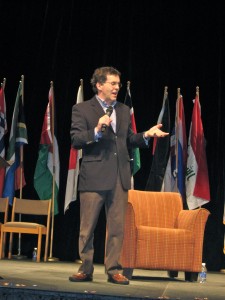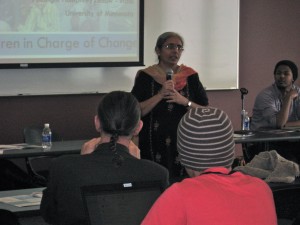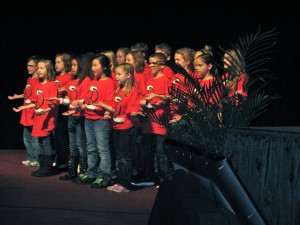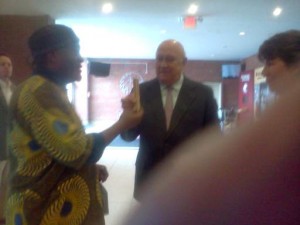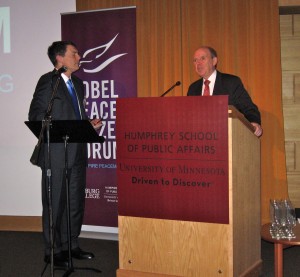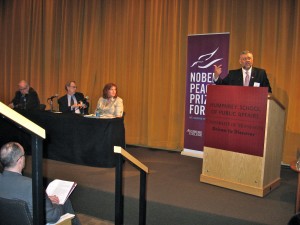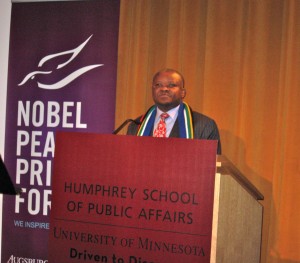Dick Bernard
This is easily by far the longest blog post I’ve done at this space. The number count says over 8300 words (normal length 600-700 words).
Cuba has always intrigued me, though the closest I’ve been is neighboring Haiti, which has both benefited and been cursed by its proximity to the island Communist Republic to its immediate west.
Fidel Castro came to power in 1959 (the inspiration for Victors 1959 Cafe at 38th and Grand in South Minneapolis (photo including John Borgen below).
Castro’s stay in power was to be brief, at least according to the U.S. Sometime before my Dad’s cousin Marvin, a prominent banker in Brainerd, died in 2006, he told me he’d made a $5 bet with a friend that Castro “wouldn’t last six months”. “I sure got that one wrong”, he allowed, cheerfully. Fifty-three years later the battle continues, to no ones benefit.
Even at the beginning, the boycott was apparently not totally absolute. The July 5, 1961, Viking News of Valley City State Teachers College (my last issue as editor) had this front page article, which explains itself (click to enlarge).
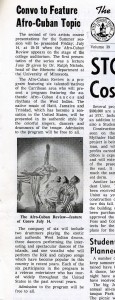
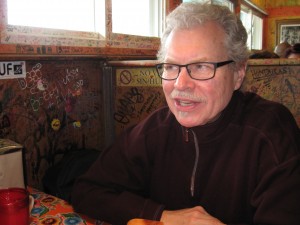
My sister, Flo, was in the Peace Corps in the Dominican Republic 1966-68, and was back to the DR to help celebrate the 50th anniversary of the Peace Corps. She and Carter decided to add on a trip to Cuba enroute home. Here’s a vintage photo of Flo at the border of Haiti and Dominican Republic about 1967 or so.

Florence Bernard at Haiti-Dominican Republic Border ca 1967
I was in the Army in October, 1962, when there was a near miss with disaster involving Cuba: the Cuban Missile Crisis it was called. My base was near one of the prime targets. All I remember is President Kennedy’s address to the nation, watched on a small black and white barracks tv with several other GIs, getting up mighty early for a few days, and then it was over.
Life has gone since then, Cuba an enigma.
Then, within the last month, I had the good fortune of having a relative – my sister and her husband – and a long-time colleague and good friend go to visit Cuba within weeks of each other.
I asked both of them to report, individually, on their impressions, which follow below.
Enjoy.
John Borgen:
Here is your requested submission of my Impressions of Cuba from my one week trip to that enigmatic island made in January, 2012.
It is said that we see what we want to see or expect to see. I have been a supporter of a romanticized Cuban Revolution since the early 1970s. I have admired Cuba’s free and universal public education, from very young through university levels. The Cuban medical care, also universal and free, has inspired me, too. There were many other things I saw that I liked. The transformation from a US dominated dictatorship under Batista which pandered to the American mafia to a communist state which has survived an American boycott for 50 years is a victory for the underdog,the canine I seem to always support. Fidel Castro has survived 11 US presidents. Good for him and the Communist Party. The billboards don’t advertise cars or insurance companies or restaurants, rather, they extol the 53 year old revolution. Pictures of the obvious Cuban spiritual “leader”, Che Guevara adorn just about any available surface. It made me feel at home as I have had his picture on my office wall for about 20 years.
But was/is the revolution good for the Cuban people? One of the people on our People to People humanitarian tour referred to Cuba as a “failed state.” I disagreed, of course, saying, given all the difficulties Cuba has faced, not the least of which was a collapse of massive support from the USSR when it came apart at its seams over 20 years ago, and of course the U.S boycott . . . Actually I think it is remarkable how well Cuba has done. Naturally, our Cuban guide spoke positively about the revolution, food is readily available (but rationed), housing is free if not luxurious, crime rates are low, there is no illegal drug problem. Of course the secret police and long jail terms contribute to the later two being as they are. International travel, the world wide web, free expression of anti government politics , boats owned by individuals are among the dreams of many Cubans. I gathered that the Party is trying to navigate a transformation into the future similar to what other former Communist counties have been able to, but I suspect the free health care and education systems will be in place for the indefinite future.
But, I’ll have to say, the Cuban people I talked with and observed seemed to be happy and relaxed. We had the opportunity to visit the brother and sister and nieces of some American friends in their home in Havavna. Nice time! Cubans are reasonably well dressed, resourceful and look healthy. There is virtually no homelessness or the kind of abject poverty that can be seem in other third world countries, which Cuba no doubt was before the revolution. Check out the web site www.ifitweremyhome.com. Compare the statistics of Cuba to other countries.
Our trip, I was with my wife, Janice and about 22 others, was delightful. We stayed at the top hotel in Havana, the Nacional Hotel for five nights and a fairly nice resort in Trinidad (Cuba) a Spanish colonial city established in 1511. The food everywhere was great (Cuban food is relatively bland), we saw museums, a beautifully restored Old Havana, a cigar factory, Ernest Hemmingway’s house, schools, cathedrals, sports facilities, some old 50s US cars, heard great music everywhere, talked with teachers and medical professionals and much more. But this was not a sit on the beach resort vacation. Cuba says 2.7 million tourists, primarily from Canada and Europe were in Cuba last year.
I see gradually expanding tourism to be the future economic engine of any transformed Cuba after the Castro brothers . It has been a dream of mine to visit Cuba before Fidel was gone. I am anxious to return in upcoming years and see how our neighbors, so close but so far away are doing. my experience in Cuba left me with many more questions than answers. I wish the U S would end the boycott and treat this beautiful nation and its 11 million citizens at least as well as we have treated Viet Nam, China and so many other former “enemies.”
One other point in the spirit of full disclosure. While I have considered my self to be a socialist at heart, I am also a free spirit and realize I would have had and still have internal conflicts between my affinity for the Cuban experiment with communism, cheering for the underdog and the free will to explore any ideas and express my beliefs openly and directly. Having said this, I invite any readers of this visit Cuba, see for yourself. It may not be a workers paradise, but the people and the country are beautiful! So for now: Viva Revolucion!
From Flo Hedeen
Travel to Cuba with Lexington Institute
Carter and Florence Hedeen – February 5-20, 2012
CUBA
The plane from Santo Domingo, DR [Dominican Republic] to Cuba was full. We checked our carry-on bags because they were over 5 K. It was nice to not be bothered with luggage. Just hope it shows up with us at the airport! Again, Carter slept and our seatmate, RPCV [retired Peace Corps Volunteer?] Anne Kopley and I talked. She served in the DR 2000-02 and is new on the Friends of the Dominican Republic board. She’s an attorney for Veterans Services in Washington DC.
Arrival was smooth and on-time in Havana. We disembarked by stairs and were transported to the terminal by bus. Customs was cold and labored. I went after Carter, but for whatever reason he was rejected the first time through. I waited on the other side of the door. When he finally came through he explained that he’d been delayed because they didn’t recognize the Park View Hotel, where we’d stay for most of our visit, as our legitimate destination. Then he had to wait as someone in a wheelchair was being served. Customs was just electronic, no removal of anything required!
At the airport lobby we were met by our Lexington Institute Leader, Phillip Peters and his son Tommy. We boarded our huge, luxury tour bus, Transtur, at 4:00 and met our guide, Abel, and driver, Idelio, both employees of the Cuban government Office of Tourism. It was then we learned that our first night in Cuba would be at the Hotel del Bosque (Forest), as the Park View Hotel was over-booked, apparently a too frequent occurrence. Maybe that’s why Carter had been rejected at immigration!
As the bus traveled into Havana our guide talked about Cuba and what we were passing. A first impression was that things are neat, but worn. Transportation took every conceivable form from our huge bus, to horse and wagon, to foot. We were checked into the Hotel del Bosque, a clean but worn place. A guava juice cocktail was given to each of us as we waited in line to register. Our room functioned well for us and included a wall safe. We showered and dressed for our first evening on the town in Havana.
First was a walk around Old Havana, getting $ changed to CUCs [Cuban currency] (1:1) and taking in some music, including classical, in a town square. It was chilly for Havana and for me! Dinner was “open-air” at El Aljibe and featured their specialty, a chicken dish that our leader thought was the best in Cuba. It was good, accompanied by hors d’oeuvres, beverages, salad, and rice and beans, served family style. Frozen yogurt and café topped off the meal. Good conversation kept us animated, but getting back to the hotel, albeit to share a three-quarter bed, was the best! We had to make up for our last night in the DR at the Rancho Don Lulu’.
2/13/12 – Monday We packed to leave and had a big buffet breakfast in the lower level of the hotel. I never realized how many ways eggs can be served! There are still foods that are unfamiliar and very tasty. So far nothing has made either of us sick. Unfortunately, Carter has come down with a cold and sore throat, but he keeps trucking. Our hand-laundered clothes dried easily over-night.
The bus picked us up at 9:15 and we learned of another change of plans – the health care visit fell through, so we went to the Hemingway Museum in a near-by town. Our guide and Phil provided dialog along the way on political, social, and economic issues impacting Cubans in a socialist society. The bye [story?] was that every society has its problems, including the USA. Amen.
Neither Carter nor I was that familiar with Hemingway’s works. His farm was on acreage just south of Havana and has been preserved as an historic site just as he left it. He obviously had money and status, but was an alcoholic, married four times, and ended his life at age 62. He expected the best of everything, including prize wild life from safaris to Africa, but likely could not satisfy himself. The Cubans admire him because he attracted many visitors and money to their piece of heaven in the Caribbean.
Lunch was at La Moraleja, a new, private restaurant. The Cuban government is now encouraging private enterprise, with around 1300 new licenses taken out since Raul Castro took over as President. In addition to the cost of the license, owners pay a percentage of their proceeds to the government, leaving them with cash in hand to use as they wish – new Cuban entrepreneurs. The main course was fabulous grilled fish and the usual abundant accompaniments. Our speakers were priests who edited a newspaper, Especial Laical, funded by churches over-seas and the Catholic Church archdiocese , discussing many topics of daily interest, not exclusively religious. Following are my notes.
They try to represent the full spectrum of opinions in the country: plurality of local and over-seas Cubans “debating” the issues. Well founded opinions, expressed with the spirit of seeking dialog, fraternity, solidarity and respect are published. They believe that this type of communication is required for a better future for Cuba. Initially there was concern on the part of the government that the project might injure the country’s stability. Attitudes expressed however, have abated concerns. It is a well-accepted magazine even though some officials continue to have concerns. It is carefully edited to avoid polarization, neutralizing the lack of confidence among sectors in Cuban society that Cubans who think differently can’t work together for a common cause, the same concern we’re experiencing in the political arena now in the USA.
Topics published include emigration, reconciliation among Cubans, institutionalization of Democracy, and relations with the world and the USA. One issue dealt with various concerns, but no argument was noted. Still the editors seek greater balance, reinforced civic participation, increased capacity of citizens to regulate government power and to strengthen the capacity of local governments and the issue of habeas corpus.
Distribution of the free 4500 copy printing is multiplied by the estimate that each copy is shared with about 10 others. Some communities choose to “sell” the free publication.
Questions raised included on the Taino population of Cuba. They believed that no indigenous people live in Cuba now though a small number may have inhabited the Bargacoa region. Historians lament the way in which they were eliminated. Study of the Cuban genome reveals that the vast majority are a mix of African and Spanish, with a minimal amount of Taino.
In 2011 the Cuban Council of Churches was established. Cuba has a different relationship with Protestant and the Catholic Church because the Catholic Church had imposed severe restrictions and interpretations that held the government to be illegitimate. There is a strong effort to open a more functional path to conversation in order to arrive at consensus.
We continued the bus tour of Havana until check-in time at the Park View Hotel near the Prada in Old Havana. We had to produce our passports, but check-in for Carter and me was very quick. In the process we received a Cuban beverage similar to a frozen daiquiri, but with rum. It was refreshing! We took the elevator six floors to our room. The maid was still cleaning and said it would be ready in about 20 minutes. We decided to walk down the six flights on the narrow, marble clad steps, with barely enough room for two people to pass. After we settled in – with another trip down and back on the steps for Carter to get the key to the room safe, we decided to walk around the area until bus time at 7:45 pm.
There’s not a lot of artificial light at night so it was a bit scary walking further away from the hotel. At the Malecon (highway skirting the harbor) we headed in the direction of the Prada, a busy friendly feeling walking area between streets. Several people offered to help us find a place to eat, but we said “No, gracias.” and headed back to the hotel. Near-by the boat that Fidel Castro used to start the revolution was on display, but was only open for viewing until 4:00 pm daily. Other government buildings surrounded our “government” hotel, as well. Dinner was at the Café del Oriente, a consolation prize for us for the hotel mix-up. It was exceptional in ambiance and food. A trio of piano, bass, and drums played wonderful dinner music. The second meal of fish for the day was more than I could finish, though delicious. Bedtime was 11:30 pm.
2/14/12 – Tuesday Valentine’s Day is celebrated in a big way, here, too!
Everything in our room seems to work well, but it is hard to control the room temperature. In the middle of the night Carter finally just turned off the fan.
We dressed for a day of lectures and were treated to another generous breakfast buffet on the 7th floor looking out to the Havana Harbor. The bus welcomed us at 8:45 am and we went to meet with the editor of a women’s magazine. She wasn’t available when we arrived so an alternate plan was offered to walk the streets in this historic area still awaiting renovation. Just as we were leaving we were advised that the Editor would be with us in 20 minutes. Phil decided that it would be unproductive to wait any longer.
We took lots of pictures of the “collectible” American-made cars, 1950’s and earlier vintage, and other activity along the street, and the general dilapidated appearance of the buildings. Man-made structures don’t take care of themselves and in the 40 years between the revolution and 1996, nothing was done. Now efforts to restore them are being funded by a 90% cut of tourist generated revenues.
Trying to regroup for lunch was challenging as some of the group got separated from us. They hadn’t heard the most current instructions for a meeting place. Finally we learned that they’d returned to the hotel when we didn’t show up for them at the park where they were waiting. After we detoured back to the hotel to get them, we went for lunch at an Italian Restaurant, a government run enterprise to benefit the rehabilitation efforts. As we sat down, a refreshing rum drink was put before us, then a plate of fresh fruit with Italian Prosciutto and fresh Italian bread. As has become the usual procedure, each of us could order two beverages with lunch. Carter and I ordered water for our second beverage as we had failed to bring any with us for the day. Spaghetti was the entre’ and a frozen cake layered with ice cream and café completed our meal.
Sorolla Castro (no relation to Fidel!) was our speaker. Here are my notes.
A Cuban educated sociologist and historian, Professor Castro has traveled, studied and spoken widely in the US about Cuban relations with the USA since the 1932 Plat Amendment was signed. It is the source of the continuing suspicion of American imperialist intentions that began before 1898. Prior to that Cuba had enjoyed American support. Since 1991, the USA has recognized that Cuba was not a security threat. The Bush administration focused more importance on domestic policy and no clear Cuban policy emerged. The Cuban American Community, most in Florida, has largely controlled the debate. Cubans refer to the Special Period following the collapse of the Soviet Union and Communist support of Cuba. In 1992 the USA adopted the Cuban Democracy Act, establishing the historic embargo, which challenged the essence of Cuban independence and punished Cuba for the lack of a democratic government. Regime change became the official policy and created five areas in which the black listing of Cuba could be justified, including: biological and international terrorism; human rights violations; sex trafficking; and forced labor. Colin Powell called these the dumbest plans ever created! In 2006 the transition to Raul Castro began, but the Cuban policy continued. In 2008 Raul was elected President. Cuba is ready and able to sit down and talk. With the Obama Administration expectations were high, but existing policy has been maintained. In 2011, however, there was significant easing of travel for Cuban Americans to and from Cuba to see family. Small actions in proportion to fundamental changes needed are what are being sought by Cuba.
A new guide, Ludwig, joined our group at the restaurant to lead us on a walking tour of historic Havana. Under the auspices of the Cuban government’s Historian, 18 hotels have been restored and are owned and operated by the government. The 1728 Dominican Bank building has been demolished and restored based on pictorial record. The Hotel Ambos Mundos, famous as a Hemingway hang-out where he was first refused service based on his disheveled appearance, keeps his room #511, as a memorial to him.
An interesting stop was the Mother’s Hospital, a place where pregnant women without sufficient resources can stay as long as they need to for their health and that of their baby, through delivery. Birth control and abortion are readily available. Children can be placed for adoption, but great care is taken in placing them. Meanwhile they live in state-run orphanages. Children are treasured.
At the original town square hundreds of tables were set up and decorated for the Valentine’s dinner. There was no shade in the square, but hundreds of people gathered to celebrate the day. Down a near-by street, shaded by tall buildings, Ludwig pointed out the remains of the original aqueduct system built in the 1500’s. Now the water source, a river, is too polluted to use. With that we walked across the Parque de San Francisco, where we’d eaten the night before at the Café del Oriente, to meet our bus and return to the hotel. Carter and I walked to the corner tienda to buy a liter of water – $2 CUCs, much more than we’d heard others paying. I’m no barterer in any language!
It was good to relax in the hotel. Carter slept and I wrote memoirs. We decided to walk with Mary and Lou Ferrand and Cappy and Ron Morgan for an evening at the Parque Catedral to have dinner and hear the band that had played our first night in Cuba. We got disoriented and ended up at the wrong park, but were redirected with the help of Ron’s map of Havana. The band was setting up when we arrived and two tables were made into one for the six of us. Dinner ordering was a bit chaotic. Lou wanted to order wine by the bottle and asked the server the price – $12 CUCs. The beverage steward came later to tell Lou that wine was only served by the glass. Lou objected and the steward left in a huff. Customer service is secondary to being right, I guess. Dinner was good and the entertainment was great, but there was a pall over our table. Mary, Cappy, Dan, Carter and I had an amicable conversation on politics and the League of Women Voters. Lou was tired and nodding off.
We took a taxi home with Ferrands and again Lou struck a hard bargain with the driver for the fare. Cappy and Dan took a horse-drawn carriage. It was good to call it a day. Carter’s sore throat and cold were getting him down, too! A heart fashioned from our blanket welcomed us back to our room! Hospitality, plus …
2/15/12 – Wednesday Nearly everything went as planned – a remarkable occurrence for this trip! We traveled about three hours to the Vinales province, seeing completely different terrain, including round capped mountains and lakes. This area is famous for growing tobacco used in making Cuban cigars. Tobacco growers are independent and farms pass from generation to generation. The cultivation of tobacco is a very specialized skill, not to be taken for granted even under the socialist government.
We had a quick tour of a cigar factory during our trip. The cigar makers have a daily quota and a very high standard to meet for their product. Most are women because they have a lighter touch, according to our guide. Many workers indicated that they’d accept a tip, but they worked behind a glass wall. Later I learned that they’d leave their work to receive CUCs, the tourist currency that allows them to purchase many things unavailable with pesos. I left one CUC with the toilet attendant – worth 23 pesos – but she provided the toilet tissue and brought the pail of water to flush the toilet.
At a rest stop there were lots of tourist items for sale. We only bought post cards, .65 CUC stamps for mailing to the USA, .55 CUC for France, and a pair of stick clappers. We expect to get back to the Art Market in Havana to do more shopping. Phil had arranged for us to visit a small tobacco farmer that he’d met on previous trips. The farm was at the foot of a limestone hill, the ground a brilliant rust color – like dried tobacco leaves! With irrigation the soil produced tobacco prolifically. The farmer was the third generation on these seven hectares, the amount of land that people were allowed to own after the Revolution. Tobacco and corn are rotated with a year of fallow to build up the soil for the tobacco crop. Ninety percent of his crop must be sold to the government. The remaining 10% can be used as he sees fit. He rolled a cigar, expertly, and made them available for sale – 12 for $20 CUCs. It’s a bargain, but we’re not permitted to bring them into the USA. Of course, they also grow tobacco and sell cigars in the DR …
The rich soil also supported vegetables and flowers in abundance. Though everything seems to have stopped in time, it all seems so peaceful and unassuming. People are doing what they must do to live. Lunch was another five-course meal at Rancho San Vincente, this time featuring pork. The band played music that really reminded us of Cuba. We bought a CD. At the local craft vendor’s stand I bought a couple of wooden pieces featuring a couple dancing salsa – the female figure moveable for effect!
The trip back to Havana included a stop for a walk-about in Vinales where nearly every other house had a room for rent for the tourists visiting the area. Carter and I walked in a nearby neighborhood and took pictures of beautiful flowers. The multi-colored houses were generally clean and well-kept. A number were under renovation. The rest of the ride home was very quiet. Carter was suffering from the effects of the cold and sore throat, now three days in the making. When we got back to the hotel he fell immediately to sleep. I wrote post cards and woke him up about 7:30. We prepared to go out for dinner in the neighborhood and ended up at the buffet at the Hotel Seville. Another couple joined us. A large group of bicyclists from Norway had also just arrived filling up the otherwise empty dining room.
Back at the hotel I gave Carter a facial massage to try to relieve his nasal congestion. He was most grateful and had a better night of sleep. Of course, the kissing swans that welcomed us back to our room, fashioned out of towels by our maid, might have helped, too!
2/16/12 – Thursday Finally, the visit to the medical facility actually happened. Phil had gotten a call late in the evening with confirmation from our guide, Abel. After breakfast, eighteen of us boarded our bus and rode about 20 minutes to a near-by suburb of Havana. The area is an attraction for Cubans who want to get away and enjoy the beach. In the city there is no quiet beach front. Again, we were reminded by Abel how ordinary, hard-working Cubans have no possibility of staying in the most humble of resorts because they simply lack the resources in either pesos or CUCs. It’s a very special occasion to spend what resources they have on other than necessities. My notes follow.
Four staff greeted us at the Policlinico – Guanabo, secondary level of care serving eastern Havana’s 33 family doctors and their patients – 1000-1500/doctor. The entire visit was driven by questions from us and most were easily and unequivocally answered. Diabetes is a specialty. Every patient sees the doctor three times a year to make sure they’re following the prescribed regimen of treatment. The Clinic provides 24-hour emergency care and longer term care. Non-compliant patients must see another doctor, including psychologists and counselors. Vaccination of children for polio, TB, Hepatitis, DTHM, and German measles is mandatory, like in the USA. Parents who are reluctant to have their children vaccinated are worked with to convince them of the need, but it’s seldom a concern. The population tends to believe the government in the area of public health. Autism does exist, but isn’t a high incidence disease. The national policy is that new medical doctors with the highest level of achievement go to serve in rural areas for two years of social service. There they can earn their specialty in family medicine. Hospitals are located every 23 km throughout the country. Policlinics provide access to excellent intensive care, radiology, optometry, ultrasound, etc.
The Family Doctor is in charge of guiding the patient through the health care system. Each patient is assigned a level of care: 1) healthy, 2) at risk, 3) sick, and 4) incapacitated. Nurses Training is very good taking two or four years or more to become a specialist. Doctors and nurses make home visits, note dangerous home conditions, and counsel on what must be done to correct them. If they are an in-home patient they are visited daily. Integrated systems of emergency medicine, ambulance service, and hospital serve the medical community and their patients. You can go wherever you want to get medical care, but the assigned family doctor gets feedback. The staff only hesitated when asked about the greatest challenge and answered that the aging of the Cuban population creates the greatest challenge. It is difficult to get some medicines and equipment. The University is in charge of equipment and training of medical professionals. InfoMed tries to maintain a current bibliography of medical information. A clinical trial is going on with a lung cancer vaccine. There are patients who receive stem cell treatment. The Health Ministry determines where these technologies will be provided.
Television is used to educate the public on pharmacology – “the precise dose” – but there is a concern with people self-medicating and sharing medicines, that is now being addressed. Sexual Counseling occurs in clinics, schools, groups of HIV patients, and other group settings. Condoms are freely distributed and public information is readily available. The numbers of students accepted into medical school is set by the government, by province. Doctors going to serve abroad are handled by the Public Health Ministry. Every doctor is asked if they are available and the numbers sent depends on how many are needed by another country. All medical graduates are generalists. After serving their mandatory two year assignment they receive an integrated family medicine degree. According to the need for specialists, doctors can apply for training in their area of interest. Even psychiatrists are first generalists. They consult at policlinicos. In 12th grade if you want to go into medicine, you take an aptitude test. It is important for people to understand that the practice of medicine is that of serving not to be served and that the student is inquisitive. Applicants are peer reviewed. For nursing, a committee reviews the student’s performance and recommends additional coursework. It is a profession of great sacrifice, entered mostly by women. Children of working parents are provided day care in government institutions. There is a shortage of nurses. Cuba doesn’t have nurse practitioners or physicians assistants.
We returned to the hotel to pick up the rest of the group and our luggage. We’ll be in a hotel in Sancti Spiritus tonight. Lunch was at the Cathedral Square restaurant, upper level. A great band played while we enjoyed our choice of fish, pork or chicken. Carter and I chose fish and received generous portions of sword fish, a first for both of us. After lunch we boarded the bus for the long ride ahead, with our final destination of Trinidad, tomorrow. Miles and miles of open country, much of it cropland, went by. Abel commented that even though Cuba has the capacity to provide for its own food needs, production falls far short of the need, even for staples like beans, rice, sugar, etc. Cooking oil is a luxury.
The Hotel Los Laureles where we were booked for the night, is on the outskirts of the city. Some took a taxi into the city of Sancti Spiritus for a look around. We chose to stay put for the evening and had yet another interesting buffet meal in the restaurant. It was hard to imagine that people could put away this much food, day after day – especially with the knowledge that ordinary folks did with so much less. The balance of our evening went to writing post cards and memoirs. One cockroach met its demise under my shoe before we went to bed and another was found belly up in the bathroom, the first of the trip. I gave Carter another facial massage concentrating on his nasal passages. He’s doing much better.
2/17/12 – Friday It was barely daylight when I went out to walk the hotel compound. Carter had nearly no water in the sink for shaving. Meanwhile I saw a lot of water flowing from broken pipes and leaky outdoor faucets on my walk. I walked toward the sound of prop airplanes apparently flying out of a near-by airport. The walkway led to one area of cement block buildings similar to those in the hotel compound, but in severe disrepair. One set looked like it might be occupied. When I left the area by road I passed a sign saying “Employees Only”. It’s amazing how even in disrepair the area had an essence of order, something that seems common in Cuba.
The sun was up and I explored a performance area. The sign there indicated that no American logos, displays, or clothing could be worn. I can understand Cuban suspicion of us! I walked back to the cottage and found Carter wondering if I’d remember I’d locked him in leaving him without a key. One had to use the same key on either side of the door for it to function – like Cousin Mary Kay’s, but only one lock! Breakfast was a pretty familiar affair by now – except we had fresh made ham and cheese omelets. The bus was ready and waiting for us at the appointed time to go into Trinidad.
Mountains came into view along the way. Abel shared the history of sugar cane production, the major crop in this area. In Colonial times Spanish barons grew cane for sugar export around the world. They used legions of African slaves for the labor intensive process. It’s hard to understand how Cuba can’t now grow cane enough to meet the needs of its own people.
In Trinidad the first stop was at a pottery factory. The family had had the business for three generations and the man at the wheel demonstrated his prowess with a hunk of clay producing a tea pot with a rope handle and lid, and several other items from the same clay. We bought a couple of souvenirs, including woven wrist bands with CUBA in pottery pieces. As we left there were many needlework vendors gathered who were anxious to have the first crack at rich tourists, which, indeed we were. Buses can’t negotiate the narrow streets of the center city so we walked to the restaurant where we were to have lunch later. We again were given the choice of hanging with the group or exploring the city on our own until then. We chose the tour of the museum of a sugar baron’s restored mansion just off of the city square. It was ornate with gilded décor and heavy, imported furniture and goods. Only a very few pieces were original in the 1700’s building. Remarkable was the indoor toilet – that dumped human waste three stories below, to keep the smell away!
As we walked through the market places, a big feature of Trinidad, most items were similar or identical from stall to stall, but clearly handmade. They had character and some ingenuity, i.e. cameras, cars, and other items made from aluminum beverage cans. We did some bartering, but really found little of interest. Instead Carter took a picture of a little boy with a mutt and her puppy. The boy tried to get the pup to nurse, but neither mom nor babe was up to it. The boy was jubilant with the CUC Carter gave him! Later other members of the group gave water by the capfuls to the pup and scraps of meat to the dog. I thought about the children watching, who likely also had empty bellies. Poverty is rampant and nasty in this socialist country. So, too, in a democracy like ours. Dare I say, there’s always hope for better times in the USA?
Lunch was once again an endless series of buffets. This time I topped my meal off with a small scoop of ice cream – delicious! We sat with Herb and Pat. RPCVs share so many common stories! Herb had started a fishing coop as a PCV in the DR and worked on building another coop in retirement in AZ. We had an hour to shop in the market after lunch. The heat was unrelenting, yet the vendors bore the brunt of it, packed together along both sides of the street. We walked into some shops, again seeing about the same things. The paintings were especially bright and colorful, just like the city of Trinidad.
We took a route back to Havana along the Caribbean, again passing much land in agricultural use or taken over by an invasive thorny bush. When we were told about the Bay of Pigs fiasco we were in the vicinity. I asked if we could wade in the water there, but instead we started a more northerly route, away from the sea. Later I requested that we make a real effort to get back to the hotel in time to go to the ballet. That was honored with much encouragement even by those with no special interest in attending!
We actually had time to rest a bit before walking to the theater about four blocks away off the Prada. Fifteen of us got front of the hall tickets for $20 CUCs ($2 pesos for Cubans!), thanks to Tommy’s help, and we were surprised and delighted by the Spanish interpretation of the Ghost based on the Phantom of the Opera and performed by the Havana Ballet Company in flamenco! There are two subsequent performances to finish the whole production, but this was the only one we could attend. Like most other things here the theater was old, ornate and very worn, but still displayed a degree of dignity. After the dance performance several of us went to the restaurant atop the Hotel Seville, of American gangster fame in the 30’s and 40’s. Cuba certainly has little reason to be impressed with American culture!
We were greeted by a trio of tenors singing well known arias, etc. Carter got a CD for our future enjoyment. We ordered only hors d’oeuvres salads and shared in a bottle of wine. No hassle this time! We really have little time or activity to use up the calories we consume every day! It was past midnight when we got back to our room. I gave Carter another facial massage, hoping he’d get a good night’s sleep. At 1:30 he woke me up to put on mosquito dope, fearing otherwise coming home with maleria. A mosquito was on attack and Carter hadn’t yet fallen asleep. Now I had to work to fall asleep again!
2/18/12 – Saturday We woke early in spite of the interrupted sleep over-night – our last full day in Cuba. After another hotel buffet breakfast we boarded the bus and before leaving for a tour to the central Market we offered our thanks and a tip to our guide and the bus driver. Filling the Market’s arena-sized space were beautifully displayed and abundant fresh foods and staples. I bought bananas, 15 for $1 CUC, something we’ve hardly been served since we came to Cuba. The meat counter was another jolt to the digestive system. Nothing is refrigerated and there’s no visible effort at sanitation. No wonder everything is generally cooked so thoroughly or no meat at all is eaten. The live chicken area was inhumane, at best. The birds were in crowded cages and handled very roughly. Six goats lay alive in a huddle, their feet tightly tied to keep them down. Fresh flowers in beautiful arrangements were a bright spot on our tour of the Market of the people.
From there we went to the historic Havana Fort to experience the annual book fair where people can buy any book available. It was a moving mass of humanity that we by-passed quickly under Abel’s leadership to get to the actual vendors from around the world. We stopped to talk with a vendor from Great Britain. The seller was a young man from NYC. Most of the books appeared to be pro-socialist. We couldn’t get the one title that had been recommended to us, “Cuba: the Search for Freedom.”
It was hot, stuffy and crowded in the expansive fair-like setting. We walked to the wall and Carter took pictures, before we left a bit early for the bus. A number of other people were already there. No one had bought anything except refreshments. We were off to the hotel to pick up more of the group before going to lunch at a private French themed restaurant. The new entrepreneurs had purchased the entire fourth floor of an apartment building. Each Cuban is permitted to purchase one piece of property. This one came equipped with a whirlpool tub in the bathroom, and toilet paper! Seafood was the fare. The food was tasty, but simple and started with tuna salad, fish fritters, and cold tomato soup. Two scoops of ice cream capped off the meal. Jan Jorgenson joined us at our table. She talked enthusiastically about her birding experience at the Bay of Pigs with two other women from our group. Most impressive to them was being able to talk with their hosts about the lives of Cubans. The most simple things in life (including toilet paper!) are inaccessible on the pay received for government work, about $40 pesos ($1.75 CUCs)/ month. CUCs earned from private enterprise, including renting out rooms, is essential.
As we walked to a children’s theater, La Colmenita, Carter paid a man with a parrot $2 CUCs so he could take a picture of me with the parrot on my shoulder! The 40-50 children who greeted us in their after school program in acting performed a fairy tale about courting the little “lady bug” by various animals. The mouse won the match-making and the children came into the audience to get us into the wedding dance. It was delightful to watch their enthusiasm and see our group respond positively. Not even Carter could resist their invitation to dance! The theater is for “play” acting only and helps to develop the children’s character: gratitude, camaraderie, kindness, and cheerfulness. What we saw was pretty convincing except when “Lady Bug” had the mike taken away from her by an older performer. She cried while she was out dancing with us. Why we don’t know, but her smile was back for the closing number on stage! The children from 33 groups of 30-60 children, ages 5-15, from all over Cuba, have performed around the world, including in the USA, their expenses paid by their hosts. They asked nothing of us but I left 20 CUCs, a pittance for us, but so much for them.
We hurried the bus trip back to the hotel because we had just one hour to visit the Museum of the Revolution before it closed at 4:45 pm. Six of us exited the bus a block before the hotel to get to the museum entrance quickly. The staff could only be considered cold and unfriendly. Most of the visitors appeared to be Cubans. We had been advised to visit the 2nd floor, first, but the docent wouldn’t permit us to go anywhere but to the 3rd floor.
Definitely history is written by the recorder of it and we saw the revolution through the eyes of the revolutionaries. By the second floor, the USA was a definite enemy of the Revolution. Defeating USA efforts to assassinate Castro and support insurrection in proverbial David and Goliath battle made me feel sad as an American Christian. Before leaving the museum, I bought some nice items from the only vendor, picking out six pieces for a total of 15 CUCs. We still had so many more CUCs to spend or exchange before we left Cuba in the morning.
Back at the hotel we showered and began preparations for our trip home. We left a tip and some clothes, albeit unwashed, with the hope that it will serve someone else well. That also left room in my suitcase for most of the souvenirs. We went to the Hotel Seville to exchange the remaining CUCs and learned that we’d have to wait until we were at the airport.
Dressed in our finest clothes for the farewell dinner at La Toree, a restaurant over-looking Havana from the 33rd floor, was the last item on our trip agenda. I really couldn’t look down! The Ron Cuba was OK, but lacked a lime. The best we’ve had was as we arrived at our hotel outside of Sancti Spiritus. We walked to the 32nd floor for dinner in a room with no ambiance. The food was well presented featuring a huge piece of rare beef tenderloin, not a joy to eat after the meat market experience. A trio of women offered about a half hour of musical entertainment. Words of gratitude and a tip were given to Phil and Tommy for their leadership. We got back to the hotel about 11:15 pm, exhausted after yet another very full day being tourists, and did a bit more packing before trying to get some sleep, difficult knowing that we’d have to be up again at 4:45 am and depend on Carter’s watch alarm to alert us on time.
2/19/12 – Sunday We got up for the day at 4:30 am, had a wake-up call from the hotel at 5:00 am, were solicited by the doorman for our bags shortly after and were down to the lobby for a quick breakfast, complements of Abel, before loading on the bus at 6:00 am for the airport. I gave some souvenir Minnetonka moccasin key-chains to Randy, Lou, and Jan, explaining that while I’d bought them at home they were actually made in the DR! The sun was just breaking dawn as we took our final bus trip in Cuba. We said our last good byes to Abel, our guide, and our driver, Idelio. They seemed genuinely grateful to us for our generous hearts, as we were genuinely grateful for their services.
Getting tickets, paying the airport tax, changing the CUCs (and losing another $10), and getting through immigration was routine. We have no official documentation that we’ve been to Cuba – unbelievable! We’d received 4 CUCs and 25 cents change. Three CUCs went to the bathroom attendants for their services and toilet paper. I tried spending the last 1.25 CUC on ice cream, but they had no spoons, so couldn’t sell me the cup of the frozen treat. Instead the remaining CUCs went to one of our group for her daughter’s upcoming trip to Cuba. We certainly could have done more!
I shared our family album with Jan and on-lookers. I had no recall of RPCVs having been told of TJ’s death. I had even less recall of other stories that were shared from our PC training days. I don’t remember fearing being deselected as nearly half of our group was, either in training or in service. I have a vague recollection, now, of staying with Mom and Dad in St. Brieux, Sas. a few days longer than expected, but thought it was because of the airline strike that took me half-way around the world to visit them, not because our PC service to the DR was being reconsidered due to the political strife there. It’s all water under the dam – and the adventure continues!
Our flight from Cuba went without a hitch. Finding our way through immigration in Santo Domingo was most challenging. We got separated from Jan and Anne at our gate so we had our last Dominican meal of the trip by ourselves. Later they joined us again and bought lighter fare from another vendor to our table. Irma and Pete were having some issues with making their connecting flight in Miami, but we didn’t catch up with them there to know the outcome. In fact, we were pretty much on our own, never really getting to say good-bye to the people with whom we had spent such significant time! We’ll never forget them or our shared experiences.
Immigration when we got to Miami was of no consequence, in spite of declaring that we’d been in Cuba and had been in agricultural areas there and also in the DR. Phil had told us that it would be easy! We had plenty of time to walk the miles of corridors to find our next gate. Pizza Hut pizza and a final Presidente beer from the DR will hold us until we get back to Minneapolis around 10:30 tonight. We were successful in changing our seats to side-by-side across the aisle. All is good!
In Minneapolis we used an actual pay phone to call Dick to be picked up. We were exhausted and very happy to have a place to spend the night before heading back home in the morning.
2/20/12 – Monday President’s Day Dick got up before us to go out for coffee, but not much later we were also up and ready to go out for breakfast with them before the long drive home. It was good to debrief with someone and share with them the small regalos we’d gotten with them in mind – a Taino picture, the bracelets from CUBA – our only contraband – and a Cuban newspaper from the airport. Dick was anxious to share things with another friend who had recently visited Cuba [see John Borgen, above]. Wonder how our stories will compare?
It was wonderful to pull into our driveway in Park Rapids at 3:00 in the afternoon and find everything pretty much as we’d left it, thanks to our neighbors’ vigilance! Snow had melted and it was 34 degrees.
